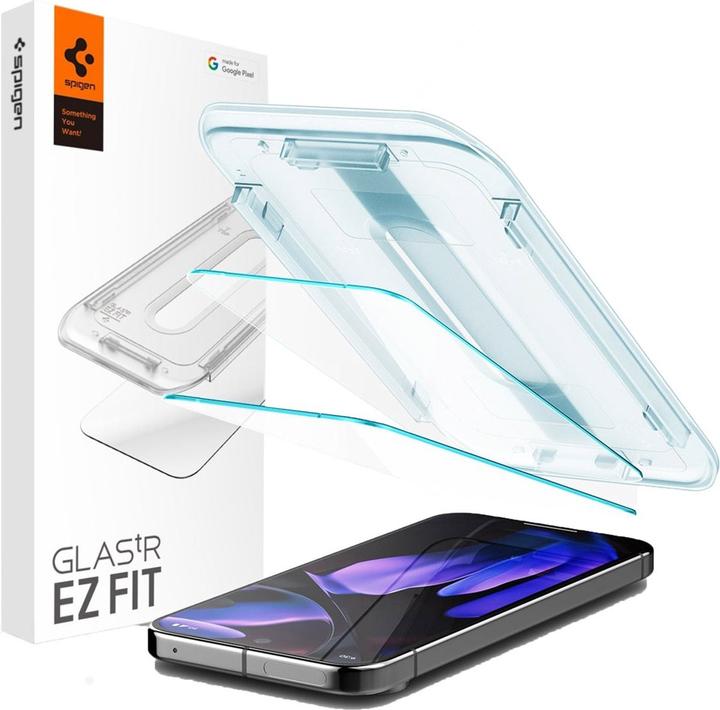
Spigen EZ Fit
2 Piece, Google Pixel 10 Pro XL, Google Pixel 9 Pro XL
Spigen wants to end every phone user’s nightmare: wonky screen protectors, bubbles and dust particles. The EZ Fit application aid supposedly makes it easier. I tried it – and it took three attempts.
For English subtitles, click the gear icon, «Subtitles/CC» and «Auto-translate».
Some things in life humble you. Doing your tax return. Assembling IKEA furniture. And applying toughened glass screen protectors to your phone. Anyone who’s ever tried to apply one to a display with millimetre precision knows it’s a nerve-wracking struggle with dust particles, bubbles and sheer despair.
Spigen aims to put an end to this psychological terror with its EZ Fit system: a tool that promises stress-free, perfectly aligned application of your screen protector in seconds. Sounds fantastic. Or like every broken teleshopping promise ever.
That’s why I want to know if it really works.
There’s nothing to complain about here. You get two protective films, two mounting trays, one wipe, one microfibre cloth and several dust removal stickers – the annoying things you only need when you’ve already lost them. There’s also a plastic scraper to squeeze out any air bubbles.
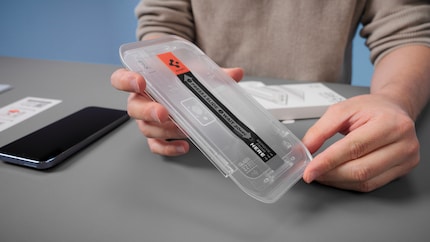
The screen protectors themselves are made of tempered glass with a 9H hardness rating, which – according to Spigen – is scratch-resistant enough to survive keys, coins and the daily battleground of your pockets. Visually, the glass looks to be high-quality and clear with rounded edges. This is rarely the case with cheap screen protectors.
So far so good.
My first attempt: I clean the display, wipe off any remaining residue with the microfibre cloth and leave the cloth on the display (this keeps dust off the glass while I prepare the application aid). Then I place the tray on the display, press the mark to align the protective screen with the glass, remove the adhesive strip that attaches the screen to the tray – and lo and behold: the protector’s perfectly aligned on the screen.
Or so I thought.
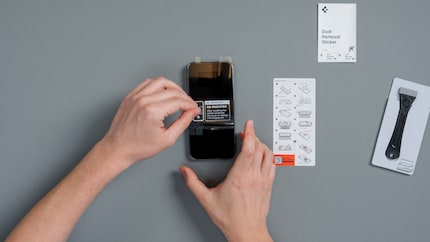
A few air bubbles still managed to sneak in underneath. Weird. That really shouldn’t happen. I can get them out easily with the scraper, but the whole thing still made me suspicious. Was it a one-off? «One way to find out», a good friend of mine always used to say in situations like this. So, I tried again.
This time everything went like clockwork. At least until I lifted the entire tray while removing the adhesive strip. That was probably my mistake the first time around.
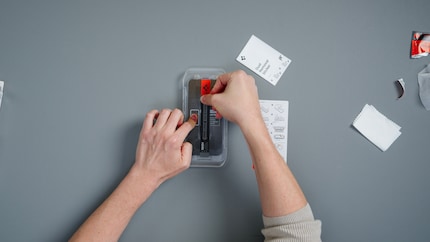
Sure enough: more bubbles. And even a speck of dust. I try to remove it with the dust removal sticker, which – to no-one’s surprise – doesn’t work. The speck of dust is gone, but now the screen protector’s wonky, and I can’t straighten it without creating more bubbles.
ARGH!
Luckily, my girlfriend has an opened spare pack. So, it’s time for round three. While peeling off the adhesive, I press the application aid onto the phone as firmly as possible. And – tada! – it’s finally perfect. No bubbles, no dust, no drama. And the whole thing took less than a minute.
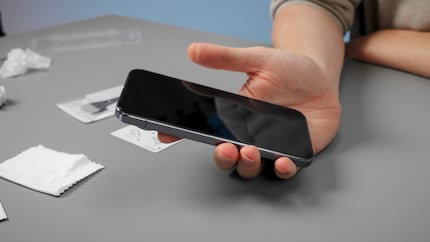
So, the principle works. You just have to know how to do it.
Spigen’s EZ Fit application aid delivers what it promises – but only if you use it correctly. The tray makes alignment foolproof, but the adhesive step is crucial. If you rush it, you’ll quickly end up with too many air bubbles. Spigen could have easily said that in its instructions.
Once you get the hang of it, you won’t want to go back. The films are high-quality, feel smooth and don’t affect the display in the slightest. In short, application aids like this one save me more than a few grey hairs, and I’ll never be without one from now on. And in the world of tempered glass films, that’s practically a miracle.
Pro
Contra

Spigen EZ Fit
2 Piece, Google Pixel 10 Pro XL, Google Pixel 9 Pro XL
I write about technology as if it were cinema, and about films as if they were real life. Between bits and blockbusters, I’m after stories that move people, not just generate clicks. And yes – sometimes I listen to film scores louder than I probably should.